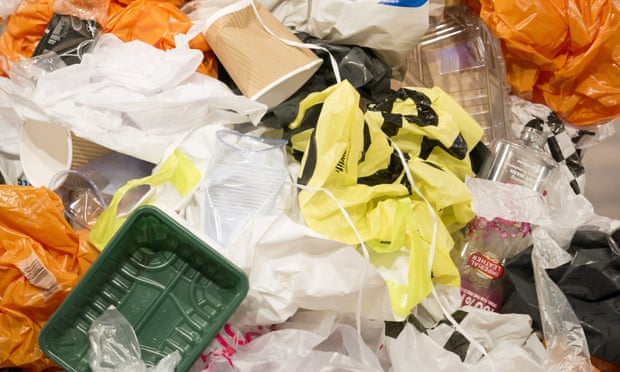- UID
- 20
- Online time
- Hours
- Posts
- Reg time
- 24-8-2017
- Last login
- 1-1-1970
|
With China refusing foreign waste under its new policy, countries are forced to handle their own plastic pollution.

Plastic waste is more likely than ever to end up in a landfill or incinerator. Photograph: S Meddle/ITV/REX/Shutterstock/S Meddle/ITV/Rex/Shutterstock
▼ As holiday shopping ramps up, so do the dizzying varieties of plastic packaging tossed in recycling bins. And while we wish a Christmas miracle would transform this old garbage into something new, the reality is the waste left over from the holiday shopping frenzy is more likely than ever to end up in a landfill or incinerator. Until January of this year, the United States and other Western countries were foisting their low-value plastic waste on to China, with little concern for the environmental degradation this caused. To protect its citizens from the burden of foreign pollution, in the beginning of this year, China refused to be the world’s dumping ground and effectively closed its doors to plastic waste imports.
China’s new National Sword policy of refusing foreign waste has brought a long-overdue moment of reckoning for the recycling industry, and by proxy, for manufacturers. It’s clear recycling alone cannot come close to addressing the ballooning amounts of plastic waste piling up all over the country. Even before China’s waste ban took effect, only 9% of plastic in the U S was actually recycled. No matter how diligently Americans sort their plastic waste, there is just too much of it for the US, or any other country, to handle.
On the bright side, the ban sparked a much needed conversation about improving domestic recycling infrastructure and recycling markets, and has forced both companies and the public to re-evaluate the products and packaging that were previously assumed to be recyclable. But the ban has also been used as a wrongful justification for burning trash in incinerators.
Waste incinerators became popular in the US in the late 80s, until harmful emissions of mercury and dioxins, toxic ash, technical failures, and prohibitive costs soured the public on the industry. However, there are still more than 70 relics left over from that failed experimentwhich continue to pollute surrounding communities and drain city coffers.Producers should focus on preventing plastic from being made in such large quantities (▪ ▪ ▪)
► Please, read the full note/article here: Source |
|